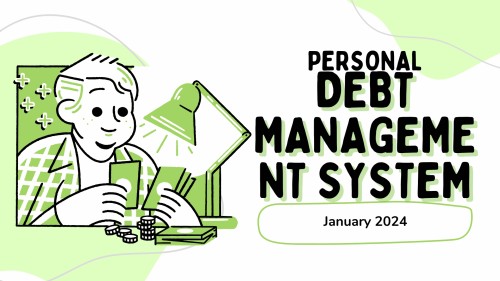
Personal Debt Management
Published 9/2024
Created by zipporah Njoroge
MP4 | Video: h264, 1280x720 | Audio: AAC, 44.1 KHz, 2 Ch
Genre: eLearning | Language: English | Duration: 16 Lectures ( 1h 24m ) | Size: 1.2 GB
Smart Financial Strategies for a Debt-Free Life
Define a debt and understand costs related to debt
Differentiate between a good and a bad debt
Identify causes of loan default and consequences of defaulting
Steps and actions to take when in default
Requirements:
No previous experience required. The content will cover all basics in personal debt management
Description:
This course provides a comprehensive understanding of personal debt management, equipping participants with the tools and strategies necessary to effectively manage and reduce their debt. Through a blend of theoretical knowledge and practical applications, students will learn how to evaluate their financial situation, create actionable debt reduction plans, and develop long-term strategies for maintaining financial health. Course Objectives

efine and Understand DebtIdentify Types of Debt: Distinguish between secured and unsecured debt, revolving and installment debt, and their specific implications.Analyze Debt Costs: Calculate the total cost of debt, including interest rates, fees, and other associated costs.Evaluate LoansDifferentiate Good and Bad Loans: Recognize the characteristics of favorable versus unfavorable loan terms.Assess Loan Terms: Evaluate interest rates, fees, and overall loan conditions to make informed borrowing decisions.Recognize Causes and Consequences of Loan DefaultIdentify Causes of Default: Understand common reasons for loan default, such as financial hardship, over-borrowing, and poor financial management.Analyze Consequences: Evaluate the impact of default on credit scores, legal implications, and personal financial well-being.Implement Effective Debt Management StrategiesDevelop a Repayment Plan: Create and manage a budget that incorporates debt repayment strategies and prioritizes high-interest debts.Explore Debt Relief Options: Investigate and apply options for debt relief, including consolidation, settlement, and credit counseling.Understand and Utilize Professional HelpSeek Professional Advice: Identify when and how to consult with credit counselors, financial advisors, or legal professionals.Understand Legal Options: Learn about bankruptcy and its implications as a last resort for debt relief.Build and Maintain Financial StabilityCreate an Emergency Fund: Establish and maintain a savings buffer to handle unexpected expenses and prevent future defaults.Improve Financial Habits: Develop and adhere to sound financial practices, including budgeting, saving, and responsible credit use.Prepare for Future BorrowingBuild a Positive Credit History: Understand how to maintain and improve your credit score to enhance future borrowing opportunities.Make Informed Financial Decisions: Apply knowledge from the course to make well-informed borrowing and financial management choices.By achieving these objectives, participants will be equipped with the knowledge and tools needed to manage debt effectively, make prudent borrowing decisions, and maintain long-term financial health.
Who this course is for:
Debt affect everyone and the course is designed for all people. It is not for a specific professional.
Homepage